Editor’s Note: From our great friend and regular SUA contributor former Congressman Pete Hoekstra. Pete represented Michigan for 18 years in Congress as chairman of the U.S. House Intelligence Committee and as a leading bipartisan voice on policy and oversight of national security, education, labor, and economic issues.
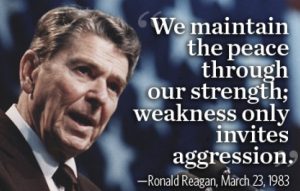

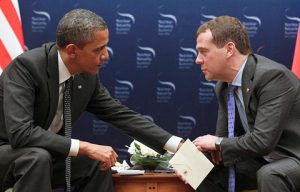

“BACK TO NUCLEAR BASICS: DOES UNlateral RESTRAINT WORK?”
By Pete Hoekstra
Nuclear weapons are in the news multiple times each day, with unsettling events in North Korea, China, Iran, and Russia escalating the concern that the United States is entering an era of growing instability and uncertainty.
While there are serious and gathering nuclear threats facing the United States and our allies, there is no need to panic, nor believe that doomsday is just around the corner. But we do need to get on with the task of modernizing our nuclear deterrent, enhancing our ballistic missile defenses and working effectively to stop the proliferation of such weapons.
This essay addresses the question of how best to maintain nuclear deterrence. Critics of the current US modernization plan urge the US to exercise restraint by curtailing the modernization of significant portions of our nuclear deterrent under the assumption that if the United States unilaterally stops “arms racing”, our adversaries such as Russia and China will as well.
My conclusion is three fold: (1) recent history shows restraint does not work; (2) nuclear modernization is absolutely required; and (3) a renewed “peace through strength” policy will both reduce nuclear dangers and restore some stability in international affairs.
First, let’s review the facts of the nuclear landscape.
The United States has deployed in its strategic nuclear forces under 1600 nuclear warheads, at least 1000 warheads less than the Russians. [The Russians have to reduce these numbers to the New Start level by February 2018].
Second, the United States has a few hundred tactical or theater nuclear weapons, less than the 2000-5000 such weapons held by Russia.
Third, the Russians are on a pace to modernize at least 90% of their nuclear deterrent force by the turn of the decade, no later than 2021 it appears. By contrast, the US modernization begins with the deployment of a new bomber, submarine and land based missiles no earlier than from mid-2027 through 2031, so US modernization restraint is hardly called for.
Fourth, and just to be clear, current forces are capable but in need of significant investment. Most of the US forces were fielded 30 or more years ago and are at the end of their service lives. They are thus actually way past due for modernization, and that is the only way they can remain credible and capable as the foundation of our deterrent. Four senior USAF and Navy nuclear commanders underscored this point in HASC testimony on March 8, 2017.
In that context, how should we treat calls for major US restraint in rebuilding our nuclear arms? Perhaps it would be instructive to review the impact of US nuclear unilateral restraint just before and following the 1990 collapse of the Soviet Union.
Now to be clear, the US and the Soviet Union and then Russia jointly agreed to the INF (1987), START I (July 1991) and START II (January 1993) nuclear weapons treaties. But unlike in the post 1990 period, we significantly invested in a simultaneous modernization of our entire nuclear deterrent during the Reagan administration while also seeking arms control. Peace through strength worked as we secured major reductions in Soviet-era nuclear weapons and the end of the Soviet Union.
It was only after the collapse of the Soviet Union did our nuclear investments markedly decline. The US went beyond the joint treaties with Moscow and took a large number of additional unilateral actions in both the Bush 41 and Clinton administrations, many of them codified in the 1994 Nuclear Posture Review (NPR). This restraint included a US nuclear policy which:
“Created no new mission or scenario for nuclear-weapon use and articulated the premise that nuclear weapons play a smaller role in U.S. security today than at any other time in the nuclear age.
“Codified that the United States no longer targets any country with strategic nuclear forces on a day-to-day basis.
“Specified that U.S. strategic bombers were taken off alert. Further, more ballistic missile submarines now patrol on “modified alert” out of the range of their targets than on an “alert” status. The U.S. airborne command and control posts now operate at a reduced tempo.
“Called for continued reduction of defense expenditures for strategic nuclear forces and in the number of associated personnel. The levels for FY 97 were roughly one-third those of FY 88.
“Terminated U.S. ground-force nuclear capability and training for nuclear missions. By FY 97, the number of U.S. nuclear weapons deployed in Europe was down from a peak of 7,000 to ‘hundreds.’
“Mandated that all nonstrategic nuclear weapons, including nuclear cruise missiles, depth charges, and torpedoes, be removed from surface ships, multipurpose submarines, and land-based naval aircraft bases. The capability to deploy such weapons on U.S. surface ships has now been eliminated.
“Continued the reduction of the overall U.S. nuclear stockpile–a 59 percent reduction from FY 88 to FY 97. Ninety percent of the nonstrategic nuclear stockpile was eliminated.
The NPR also assumed such unilateral reductions were safe to undertake because the Russians would not brandish for diplomatic or military purposes its nuclear weapons. The study further assumed the Russian leadership was intent on fully joining the “international community of market economies”, and that the Russian nuclear arsenal would not pose a serious threat to the United States. Overall, the report generally foresaw a relatively benign future nuclear environment. (1)
What happened?
In fact, after the American unilateral exercise of nuclear restraint, these serious and adverse nuclear developments followed:
- The Russians in 2000 turned down START II arguing that Moscow would not agree to the treaty’s ban on multiple warhead land based missiles. Russia insisted that all US work on missile defenses had to be contained within the laboratory with strict adherence to the ABM Treaty. Those conditions were not acceptable to the Clinton administration nor the Congress and thus the treaty never went into effect.
- North Korea worked to produce nuclear weapons fuel in violation of the 1995 Agreed Framework that purported to end Pyongyang’s pursuit of nuclear weapons. Eventually, in 2006 North Korea tested an actual nuclear weapon while advancing its ballistic missile delivery systems.
- Iran went forward with its nuclear work, both increasing its capacity to make enriched nuclear fuel and seeking help to design warheads.
- The Khan network out of Pakistan, what I have termed the “Nukes ‘R Us” outfit, expanded its work of distributing nuclear weapons technology and scientific nuclear know-how to North Korea, Libya, and Iran.
- Pakistan and India, as well, exploded nuclear devices and made plans to sharply increase their inventory of nuclear weapons.
- China, too, expanded its nuclear capability, and began the construction of what appears to have been $50 billion (my estimate) in missile tunnels and train tracks that would come to house mobile land based missiles, as part of a modernization of all elements of their nuclear deterrent.
In addition, Russian aggression in Ukraine and Crimea went unchecked, and China unilaterally seized atolls and reefs in the South China Sea on which it is building military bases.
In just the past decade, Russia and China together have rhetorically brandished nuclear weapons three dozen times, threatening to use such weapons in the conduct of their foreign policy, and rhetorically threatening to push the US and its allies to give up important international security objectives or risk nuclear attack.
Recently, both Norway and Denmark, for example, were added to the Russian nuclear target list said the Kremlin, for the “provocative” one for protecting its territorial sea from the incursion of Russian submarines and the other for planning to put a missile defense capability on its Navy Aegis cruisers.
The gathering nuclear threats today cannot be tied to any notion that the US has not evidenced sufficient restraint, including unilateral gestures of nuclear arms control.
China, Russia, North Korea and Iran, seek to replace a rules based civilized order with one of blackmail, coercion, terror and aggression. Acting with restraint in the fact of such aggression is not a policy but it is a faith based hope. Nuclear dangers arose in part because we exercised excessive restraint, what one senior Air Force official described as a “nuclear procurement holiday”—created a security vacuum that over a period of the past two decades the bad “hombres” filled.
President Trump has argued that the United States must maintain its nuclear deterrent forces at “the top of the heap” when compared to our adversaries. He has also repeatedly noted that our forces are in need of repair and modernization as Russia and China fully modernize their nuclear forces.
Here the disarmament advocates appear to trying to have it both ways—the claim nothing is wrong with our deterrent as it still is better than the Russians but simultaneously they argue we need to kill large segments of that same force so the Russians don’t engage in an arms race!
For example, former Secretary of Defense William Perry and former defense logistics staffer Lawrence Korb both advocate a massive unilateral 97% reduction in America’s nuclear assets plus a one-third reduction in our warheads, arguing that maintaining nuclear parity with the Russians is unnecessary.
If we don’t try to retreat our way to nuclear safety, isn’t the alternative unaffordable? Can we really increase the defense budget adequately to fully modernize the nuclear deterrent?
Again, let us look at the facts. The United States now spends in the neighborhood of 5% of the defense budget on nuclear modernization. At the peak of this effort next decade, we will be spending 6% but only one half of one percent of the Federal budget. That means for every $100 Uncle Sam spends, the nuclear deterrent gets 50 cents.
Looked at another way, this is the equivalent of a household with a $52,000 income—the national per capita GDP average—spending on auto, fire, life, and homeowners insurance $22 a month.
Ok, it may be cheap the critics might admit, but what does it matter if we underfund our defense? What if we simply gamble and spent less?
Well, let’s look at some history.
Prior to World War II and the Korean War, the US defense budgets were dramatically curtailed or sustained at levels incompatible with our security.
We know that the US and its allies were woefully unprepared for both conflicts.
Defense spending in the US was $700 million in 1933; it remained at that level for every year of that decade up to Pearl Harbor.
After WWII, from 1945-50, US defense budgets declined markedly, from near $90 billion at the war’s end to under $10 billion. Just a year prior to the Korean War, the US defense secretary was urging Congress to cut the defense budget down to no more than $7 billion a year.
On December 7th, 1941, and June 25, 1950, respectively, Japan bombed Pearl Harbor and North Korea invaded the Republic of Korea. These wars killed a combined 81 million people, out of a world population of roughly 2.4 billion, or three percent of all the people alive at the time.
These wars were fought almost entirely without the use of nuclear weapons, with the exception of the bombing of two Japanese cities which historians agree saved the lives of millions of people by ending the war in the Pacific.
Spending $26 billion annually now on nuclear deterrence, increasing to $35 billion by the middle of next decade, is a prudent insurance policy that will annually cost $9 billion more next decade than today.
These are the projected nuclear investments now planned in budgets approved by Congress.
By contrast, Americans spent $11 billion in 2016 just going to the movies.
Today’s investment is with treasure and yes the amount is a lot of money.
But if we get this wrong, tomorrow will be paid in blood.
Just to save $9 billion a year or $28 for every American living today, think of what we are willing to risk. As the advertisement says, you can pay me today, or you can pay me tomorrow.
World War II and the Korean War were fought with conventional weapons. And upwards of 84 million people perished.
The next war could be fought with nuclear ones. And we are willing to take that risk just to save each American $28 a year?
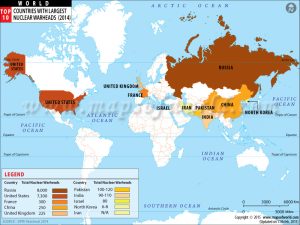
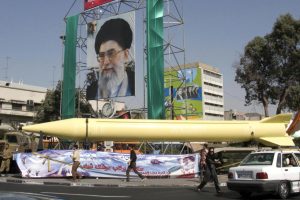
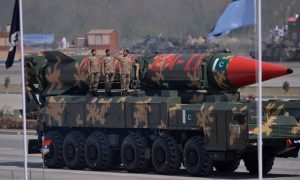
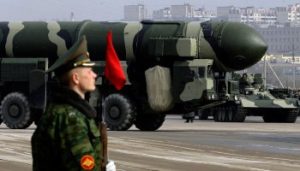
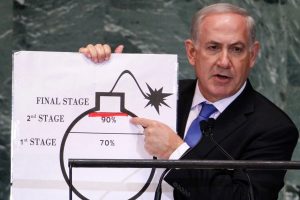
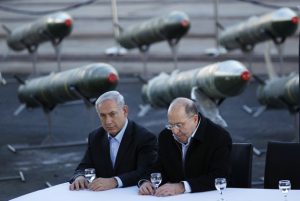


America First Million Member Sign-Up
Please join us in our commitment to promote American exceptionalism, freedom, our Constitution, our American way of life, and our safety and security by making a donation and subscribing to our periodic newsletters and messages by donating below.


